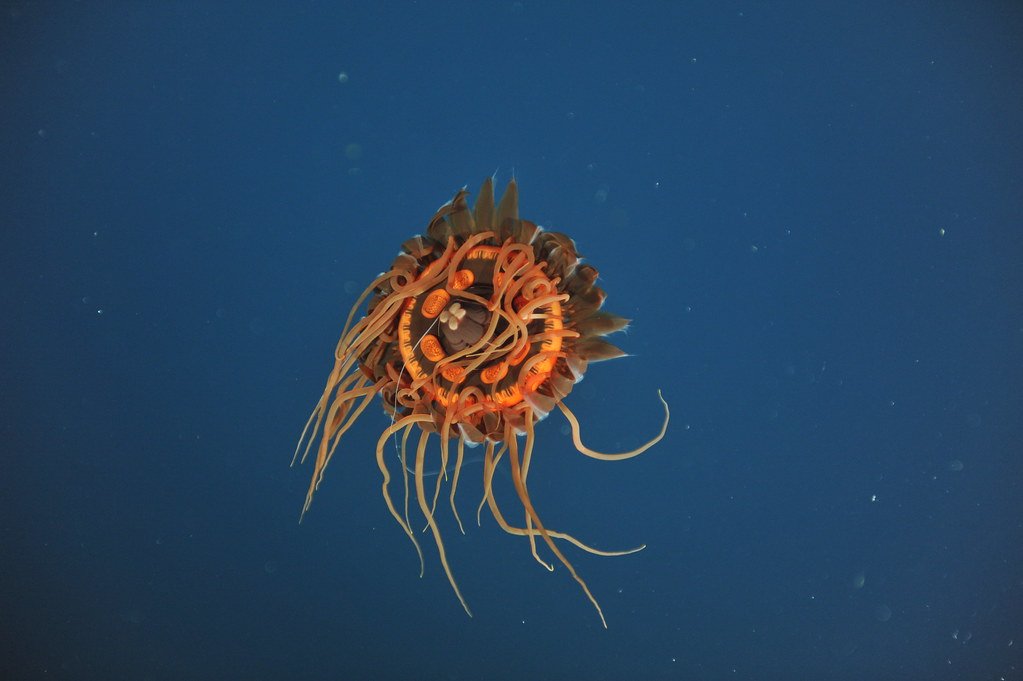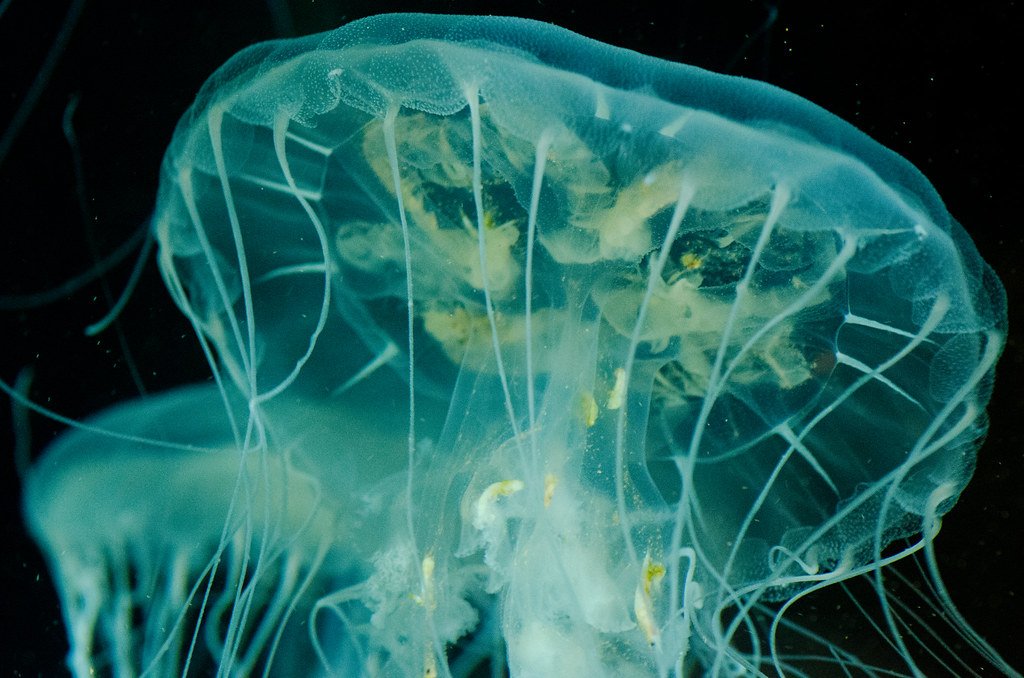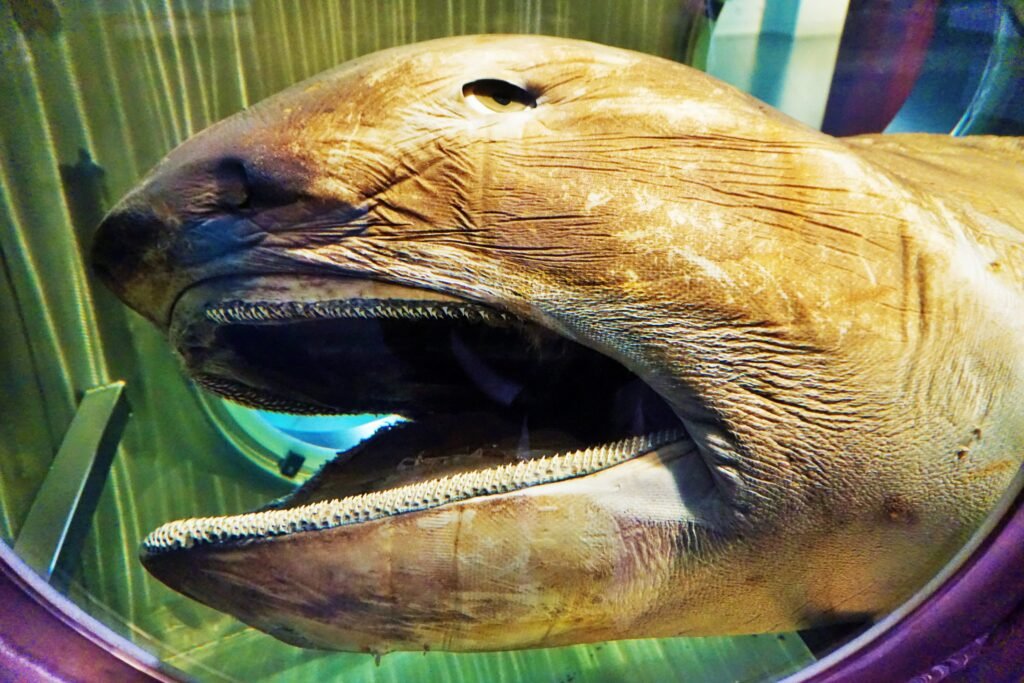The ocean, a vast and largely unexplored frontier, is home to some of the most intriguing and confounding mysteries known to humankind. Among these mysteries are the enigmatic deep-sea creatures that seem to defy scientific understanding. Although technology has advanced our ability to explore the depths, there remains a wealth of knowledge waiting to be uncovered about these spectral inhabitants of the ocean’s abyss.
Ancient Lurkers: The Coelacanth

The coelacanth was once believed to be extinct, having disappeared from fossil records over 65 million years ago. That belief was overturned in 1938 when a living specimen was discovered off the coast of South Africa. This “living fossil” mystifies scientists with its unique anatomy, including lobed pectoral fins reminiscent of early tetrapods. Despite being studied for decades now, much about its behavior and lifecycle remains shrouded in mystery, particularly its reproduction and the extent of its distribution.
Bioluminescent Enigmas: The Atolla Jellyfish

The Atolla jellyfish, with its striking display of bioluminescence, is an undeniably captivating sight. Known as the “alarm jellyfish,” it emits pulsating lights when threatened to deter predators or attract larger creatures that might prey on its attacker. While bioluminescence is understood as a defense mechanism, the genetics and precise evolutionary path that led to this ability remain elusive in the scientific community.
The Immortal Jellyfish: Turritopsis dohrnii

Turritopsis dohrnii has captured the imagination of scientists and the general public alike, thanks to its ability to seemingly cheat death. Known as the “immortal jellyfish,” it can revert to its juvenile form after reaching maturity, essentially restarting its life cycle. While researchers have studied the cellular mechanisms behind this process, the comprehensive understanding of this phenomenon and its potential implications for biology and medicine remains incomplete.
The Deep’s Navigator: The Vampire Squid

Despite its ominous name, the vampire squid is a gentle denizen of the deep ocean. Residing in oxygen-minimum zones, this peculiar creature is adapted to survive in the harshest environments. Its ability to endure low oxygen levels and “filamentous feeding” technique – extending long filaments to catch organic particles – puzzles scientists, who are eager to understand how it metabolically adapts to such challenging conditions.
The Eyeless Wonders: Deep-Sea Fish

Numerous fish species dwelling in the ocean’s depths have evolved to live in complete darkness, often lacking eyes entirely and relying on other senses to navigate and hunt. These adaptations raise questions about the evolutionary processes that led to their current forms and their impacts on sensory development. Understanding these evolutionary nuances could offer insights into how life can adapt to extreme environments.
Predators of the Abyss: The Megamouth Shark

Discovered as recently as 1976, the megamouth shark remains one of the ocean’s most elusive animals. Known for its slow swimming and gigantic, filter-feeding mouth, little is known about its habits, reproduction, and full range of motion. Its discovery in different parts of the world has only increased the intrigue surrounding its migratory patterns.
The Ghostly Giant: The Giant Squid

Few creatures capture the imagination like the giant squid, an elusive behemoth of the deep. For centuries, it existed only in sailors’ tales and myths until photographic evidence emerged. Despite advances in deep-sea technology and some subsequent findings, much about its biology, behavior, and ecological role remains a mystery, including its mating practices and developmental stages.
The Unknown Paths of Sperm Whales

Sperm whales, the largest toothed predators in the ocean, dive to incredible depths in search of squid. Their deep-sea forays, sophisticated social structures, and haunting vocalizations prompt questions about their navigation methods and communication. Through the study of their unusual diving physiology and behavior, scientists hope to uncover more about the deep-sea ecology and the role these creatures play.
The Unseen Ecosystems: Methane Seeps

Deep-sea methane seeps host unique ecosystems that thrive amidst toxic gases and hydrocarbon emissions. These microbial communities and symbiotic relationships are still largely unexplained, and scientists are investigating how such life forms extract energy and the potential implications for understanding life on other planets. The exploration of these ecosystems challenges traditional notions of biological diversity and survival.
Conclusion: The Uncharted Frontier

In the grand hierarchy of unsolved natural mysteries, the ocean’s depths sit at the pinnacle, home to creatures that baffle and inspire. As our technological capabilities continue to evolve, so does the potential to unlock these secrets of the deep. The study of these mysterious creatures not only advances our biological and ecological knowledge but also fuels the human appetite for discovery, reminding us of how much of our world remains uncharted and unexplored.




